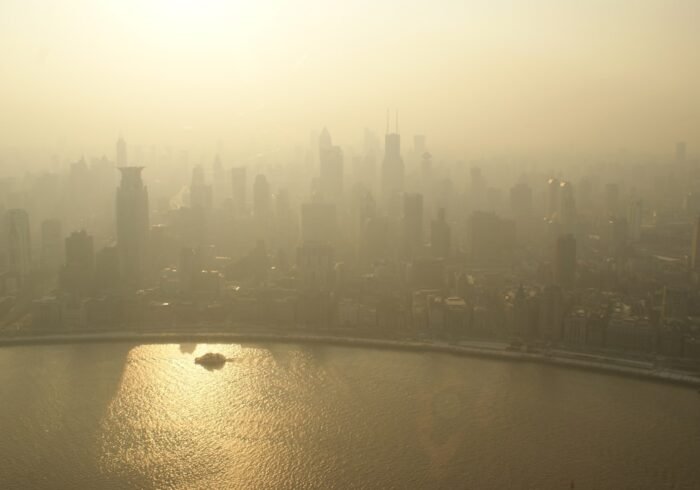Pharmaceutical Pollution in Waterways: A Growing Concern Researchers, decision-makers, & the general public are all becoming more concerned about pharmaceutical pollution in waterways as a serious environmental problem. This phenomenon, which can result from a variety of sources, including drug use by humans and animals, describes the presence of pharmaceutical compounds in aquatic environments. The prevalence of these chemicals in water systems has grown to be a serious concern as the world’s population continues to rise and healthcare demands rise.
Key Takeaways
- Pharmaceutical pollution in waterways is a growing concern with potential impacts on aquatic life, ecosystems, and human health.
- Sources of pharmaceutical pollution include improper disposal, excretion, and manufacturing, leading to the presence of various types of drugs in waterways.
- Pharmaceutical pollution can disrupt the behavior, reproduction, and development of aquatic organisms, as well as contribute to the development of antibiotic resistance.
- Human health implications of pharmaceutical pollution in waterways include potential exposure to drugs through drinking water and the development of antibiotic-resistant bacteria.
- Regulatory efforts to address pharmaceutical pollution face challenges such as the complexity of tracking and regulating numerous drugs, as well as the need for international cooperation and public awareness.
Pharmaceutical pollution has repercussions that go beyond simple contamination; it endangers human health, aquatic ecosystems, and the general integrity of water supplies. Drugs are frequently accidentally introduced into waterways as a result of inappropriate disposal techniques, agricultural runoff, and ineffective wastewater treatment. The delicate balance of aquatic ecosystems may be upset as these substances find their way into rivers, lakes, and oceans. Many medications are made to be biologically active, which means that even at low dosages, they can have significant effects.
This adds to the complexity of the problem. It is essential to comprehend the causes and consequences of pharmaceutical pollution in order to create practical solutions that will lessen its effects & safeguard human and environmental health. Pharmaceutical pollution comes from many different sources, each of which has a unique way of contaminating water systems.
Many people think that flushing unused or expired medications down the toilet or pouring them down the sink is a safe way to dispose of them. These substances can, however, enter rivers and streams because wastewater treatment facilities are frequently ill-equipped to completely remove them. Pharmaceutical residues can also be found in agricultural runoff because drugs used to treat livestock can seep into the ground and eventually end up in waterways. Pharmaceutical manufacturing facilities’ industrial discharges are a major source of pharmaceutical pollution.
| Waterway | Pharmaceutical Pollution Level (ppb) | Impact on Aquatic Life |
|---|---|---|
| River A | 25 | Decreased fertility in fish |
| Lake B | 15 | Altered behavior in amphibians |
| Stream C | 30 | Increased mortality in invertebrates |
During production, these plants may discharge effluents into adjacent waterways that contain active pharmaceutical ingredients (APIs). Also, the disposal of pharmaceutical-containing medical waste by hospitals and other healthcare facilities exacerbates this problem. These diverse sources work together to create a complex mixture of pollutants in aquatic environments, such as hormones, analgesics, and antibiotics. Regarding their environmental persistence and possible effects on aquatic organisms, each type of pharmaceutical poses different challenges.
It has been demonstrated that aquatic life & ecosystems suffer when pharmaceuticals are present in waterways. Changes in behavior, reproduction, and survival rates among fish and other aquatic organisms exposed to these contaminants have been reported in numerous studies. For example, fish’s endocrine systems may be upset by some of the hormones in contraceptive pills, which could result in distorted sex ratios and changed reproductive patterns.
Antibiotics can also help bacteria in aquatic environments become resistant to them, endangering human health as well as marine life. Pharmaceutical pollution has the potential to upset entire ecosystems in addition to individual species. Species composition changes and biodiversity loss may result from the introduction of foreign substances. An imbalance that can impact food webs & ecosystem functions could arise, for instance, if more resilient species increase in number while sensitive species decrease. The long-term effects of these disturbances are still being investigated, but it is obvious that pharmaceutical pollution is a serious risk to aquatic ecosystem stability and health.
Pharmaceutical pollution has consequences that go beyond environmental issues; it also endangers human health. Drinking water or engaging in recreational activities like swimming and fishing can expose one to contaminated water sources. Even though many medications are found in trace amounts, their long-term effects can be alarming. Studies have indicated possible connections between exposure to specific medications and negative health consequences, such as hormone imbalances & heightened resistance to antibiotics. Also, concerns are raised regarding the safety of public water supplies when pharmaceuticals are found in drinking water. Water treatment facilities may not be completely effective against all pharmaceutical compounds, despite their design to remove contaminants.
This ambiguity emphasizes how important it is to continue research & monitoring in order to fully comprehend the possible health risks connected to exposure to these pollutants. As more people become aware of the link between environmental pollution and human health, it is crucial that communities take proactive measures to combat pharmaceutical pollution. At different levels, regulatory initiatives have been launched to address pharmaceutical pollution; however, there are still obstacles in the way of successfully handling this intricate problem. There are gaps in protection for aquatic environments because pharmaceutical contaminants are not specifically addressed by wastewater treatment regulations in many countries. Although some areas have started putting policies in place to keep an eye on and cut down on pharmaceutical spills, there are currently no comprehensive rules in place.
The vast variety of medications and their disparate characteristics is one major obstacle. To effectively remove certain compounds from wastewater, different treatment techniques might be needed. Also, because pharmaceutical development moves so quickly, new medications are constantly hitting the market, frequently surpassing regulatory reactions. Efforts to create effective regulations that can adjust to new risks posed by pharmaceutical pollution are complicated by this dynamic environment.
Preventive, therapeutic, and public involvement strategies are all necessary to address pharmaceutical pollution. Raising public awareness of appropriate medication disposal techniques is one successful tactic. The quantity of pharmaceuticals that enter wastewater systems can be greatly decreased by encouraging people to return unused medications to pharmacies or approved take-back programs. Consumers can also learn about the negative effects that inappropriate disposal methods have on the environment through educational campaigns. Larger-scale pharmaceutical removal from effluents before they enter natural water bodies depends on improving wastewater treatment technologies. In wastewater, advanced treatment techniques like membrane filtration, activated carbon adsorption, and ozonation have demonstrated promise in lowering pharmaceutical concentrations.
Municipalities can manage pharmaceutical pollutants more effectively by funding research & development for novel treatment approaches. Education and public awareness campaigns are essential in the fight against pharmaceutical contamination. Communities can be empowered to take action in their own lives by learning about the causes and effects of this problem. Community gatherings, educational booklets, and workshops centered on appropriate medication use and disposal techniques are examples of educational initiatives.
Also, cooperation between local governments, environmental groups, and healthcare providers can strengthen campaigns to increase public awareness of pharmaceutical pollution. Together, these stakeholders can create all-encompassing plans that meaningfully involve the public. For example, residents’ sense of stewardship can be promoted through community clean-up days or educational initiatives about the value of preserving water resources. The complicated problem of pharmaceutical contamination of waterways requires immediate attention from all facets of society.
There are substantial & wide-ranging effects on human health & aquatic ecosystems. It is crucial that people, communities, & legislators take proactive measures to reduce pharmaceutical pollution as awareness of this urgent issue grows. An all-encompassing call to action is required, one that promotes responsible medication disposal, backs improvements in wastewater treatment technologies, and encourages public participation through educational programs.
The health of future generations as well as society’s water resources can be safeguarded by cooperating to address this problem. Everyone must take meaningful action to create a cleaner, healthier environment for everybody and acknowledge their part in preventing pharmaceutical pollution.
Pharmaceutical pollution in waterways poses hidden dangers that can have far-reaching consequences on both human health and the environment. To further understand the impact of human activities on the environment, it is crucial to also consider the rising temperatures and global warming crisis. A critical analysis of human impact on the environment can shed light on the urgency of addressing these issues. For more information on how we can take action to combat climate change and protect our waterways, check out this article on fixing climate change: a call to action.
FAQs
What is pharmaceutical pollution in waterways?
Pharmaceutical pollution in waterways refers to the presence of pharmaceutical compounds and their metabolites in rivers, lakes, and other bodies of water. These compounds can enter the environment through various pathways, including the excretion of drugs by humans and animals, improper disposal of unused medications, and runoff from pharmaceutical manufacturing facilities.
What are the potential dangers of pharmaceutical pollution in waterways?
Pharmaceutical pollution in waterways can have a range of negative impacts on aquatic ecosystems and human health. It can disrupt the behavior and reproduction of aquatic organisms, contribute to the development of antibiotic-resistant bacteria, and potentially pose risks to human health through the consumption of contaminated water or seafood.
How widespread is pharmaceutical pollution in waterways?
Pharmaceutical pollution in waterways is a global issue, with studies documenting the presence of pharmaceutical compounds in water bodies around the world. The extent of contamination varies depending on factors such as population density, industrial activity, and wastewater treatment practices.
What measures can be taken to address pharmaceutical pollution in waterways?
Efforts to address pharmaceutical pollution in waterways include improving wastewater treatment processes to remove pharmaceutical compounds, promoting proper disposal of unused medications, and implementing regulations to limit the release of pharmaceuticals from manufacturing facilities. Additionally, public education and awareness campaigns can help reduce the environmental impact of pharmaceuticals.



